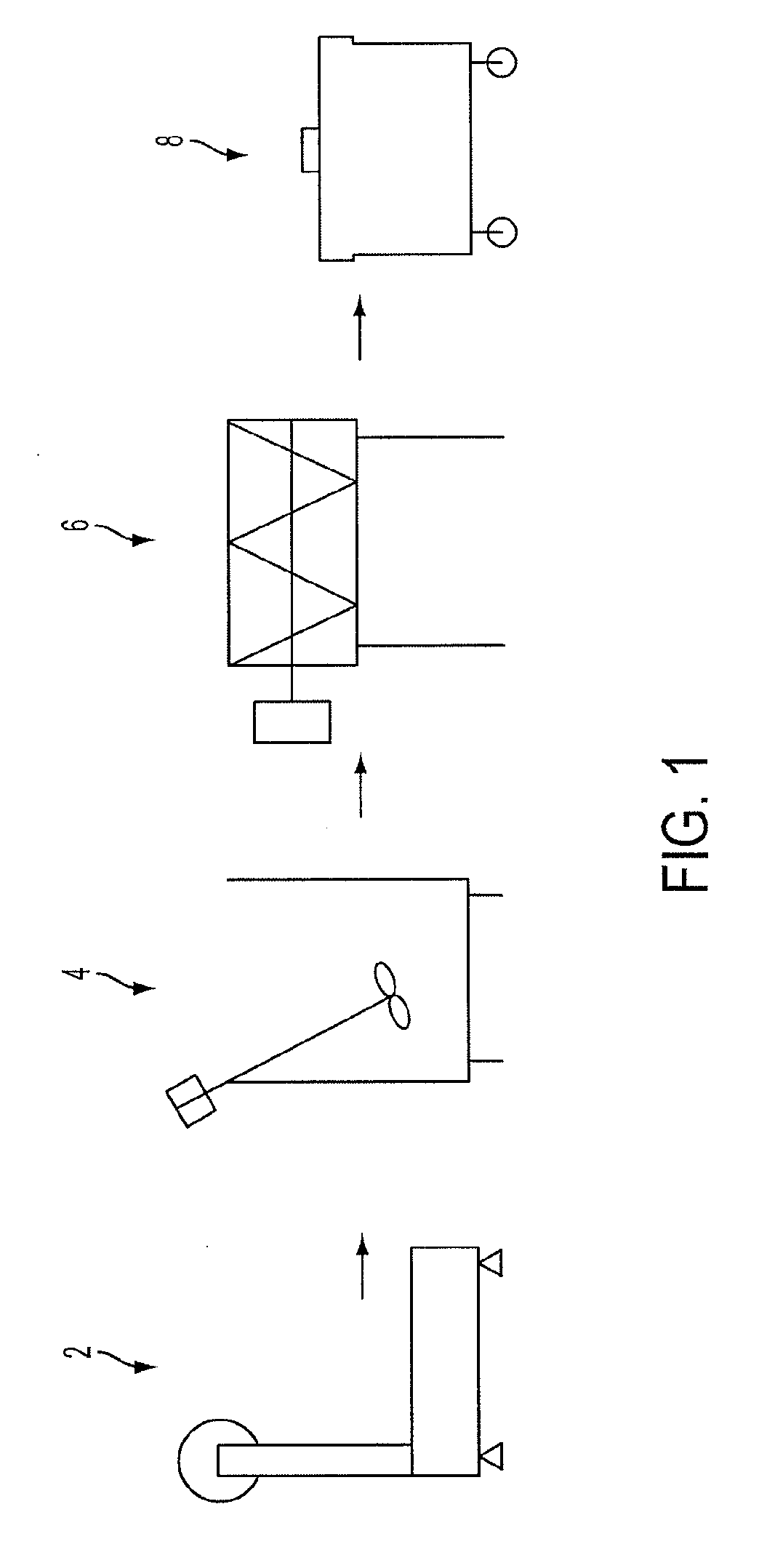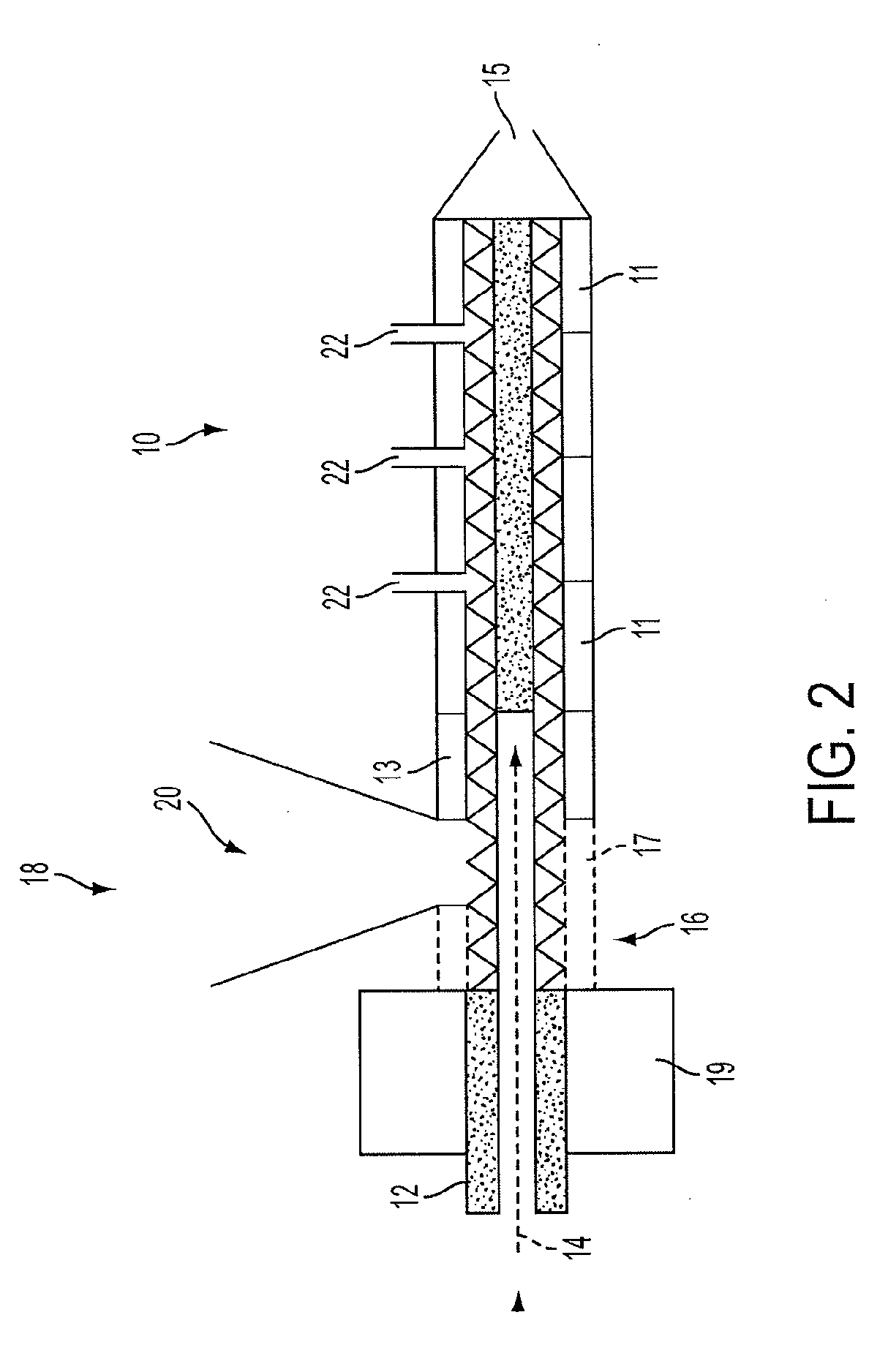Despite this fact, US smokers are generally reluctant to try smokeless tobacco products.
Traditional smokeless tobacco products frequently appear to be moist and dirty.
Moreover, American consumers generally react poorly to traditional smokeless tobacco products when they do try such products.
It can be assumed that reactions may even be less favorable in countries which do not, like the U.S., have an incidence of modern smokeless use.
Regardless of whether tobacco is lose or in pouches, it is generally brown, often moist and is considered unsightly and unappealing by many smokers who are reluctant to use smokeless tobacco products.
However, no methods of enhanced nicotine absorption from amount of tobacco have been taught.
In addition the pouch wall also serves as an obstruction to nicotine outflow from the tobacco.
As energy costs have escalated the cost of removing
excess water has increasing cost implications.
But applicant has found that it is not helpful in connection with a sustained release dissolving tobacco sheet.
This is because the inherent properties of the wet
casting manufacturing process—as currently understood—do not allow for the manufacture of thicker sheets.
Wet cast edible films are typically quickly dissolving products, and practitioners have struggled—and not with great success—to extend the disintegration time of wet cast edible film products where a slower dissolving product would be more appropriate for the intended use.
One of the principle problems is that
polymer molecular weight is frequently in a direct relationship to
viscosity and wet casting is unable to deal with high viscosities.
The product contains high
moisture content and uses water to help impart the product with flexibility (a trait easily demonstrated by
drying a Listerine strip—at which point it becomes very brittle and will crack and break when bent).
It should be noted that these descriptions of the wet cast products do not address whether the active material is
water soluble or insoluble and whether it requires
taste masking or does not require
taste masking.
One limitation of wet cast technology is the difficulty—indeed, the inability to wet
cast films beyond a certain thickness (or loading) range.
This is due to the relationship between
viscosity and
coating thickness, which creates a practical limitation on the ability to coat beyond certain thickness levels, and the difficulty removing
moisture from films past a certain thickness levels, even if they are successfully cast.
Likewise, limitations on thickness also limit the extension of
dissolution time of the film matrix.
That such a practice would involve immense challenges—arguably impossible—to scale to commercial manufacture is readily apparent.
This method is undoubtedly more practical from a manufacturing perspective than Fankhauser's proposed solution, but too costly to practice—even in the pharmaceutical space.
As a result, such multiple film laminates are not seen in the marketplace as commercial products.
Even
monolayer wet casting can be relatively expensive.
Commercial equipment involves long
drying ovens and is too heavy to be moved, requiring specialized and dedicated production suites.
These costs may be born by pharmaceutical products but can be challenging in the cost competitive global tobacco field.
However additional costs and process steps to include the use of a substrate backing are involved.
If such films lack the requisite
pliability and tensile strength, they will tend to break during packaging causing substantial losses in process yield.
The reality is that
physical strength and resulting breakage and process yield issues have been significant problems for many of the non-PEO films.
The related issue of
physical stability is also an issue for many wet
cast films—expensive barrier packaging is often used as a matter of necessity.
Boots Chemists launched a
Vitamin C strip manufactured by BioProgress in Tampa Fla. that had to be removed from the shelves because it was crumbling in the
package—earning the name “chips not strips.” This story is not unique—many projects have failed to move out from development to commercialization due to
physical stability issues.
In addition, the mixing of wet based compositions for casting itself raises certain challenges.
First, the
solvent itself adds volume to the mix.
Wet compositions may tend to adhere to mixing vessels and any transit
piping leading to yield losses.
Foaming may be in issue.
Extrusion has more recently been used in
medical device manufacture and in the making of transdermal
drug delivery systems—of course, these are both non-edible and insoluble.
Additionally, PEO is a very expensive polymer that is ill suited to tobacco products from a cost perspective.
High levels of
plasticizer are also not desirable for a number of reasons.
Plasticizer tends to increase the tackiness of a composition, potentially requiring the use of a substrate paper to separate the product when rolled up, and potentially further precluding a packaging configuration where one sheet rests on top of the other like in a cassette.
Additionally, relying on high levels of
plasticizer tends to decrease the amount of active that can be loaded in the product.
Furthermore, reliance on
plasticizer may create physical stability issues as the product will tend to increase in
brittleness to the extend that the plasticizer volatizes during storage of the product.
Smokers are often reluctant to use these products because they are believed to be socially inappropriate since removal from the mouth can be embarrassing or can offend others.
Unlike the cast examples, it is noted this “tobacco film was placed in a container suitable for storage” presumably due to tackiness and other stability issues caused by
exposure to ambient conditions.
It is highly doubtful that such fast dissolving products could deliver acceptable tobacco satisfaction, including sufficient nicotine absorption.
Undoubtedly, this is part of the reason why none of these products have been sold commercially.
 Login to View More
Login to View More 


